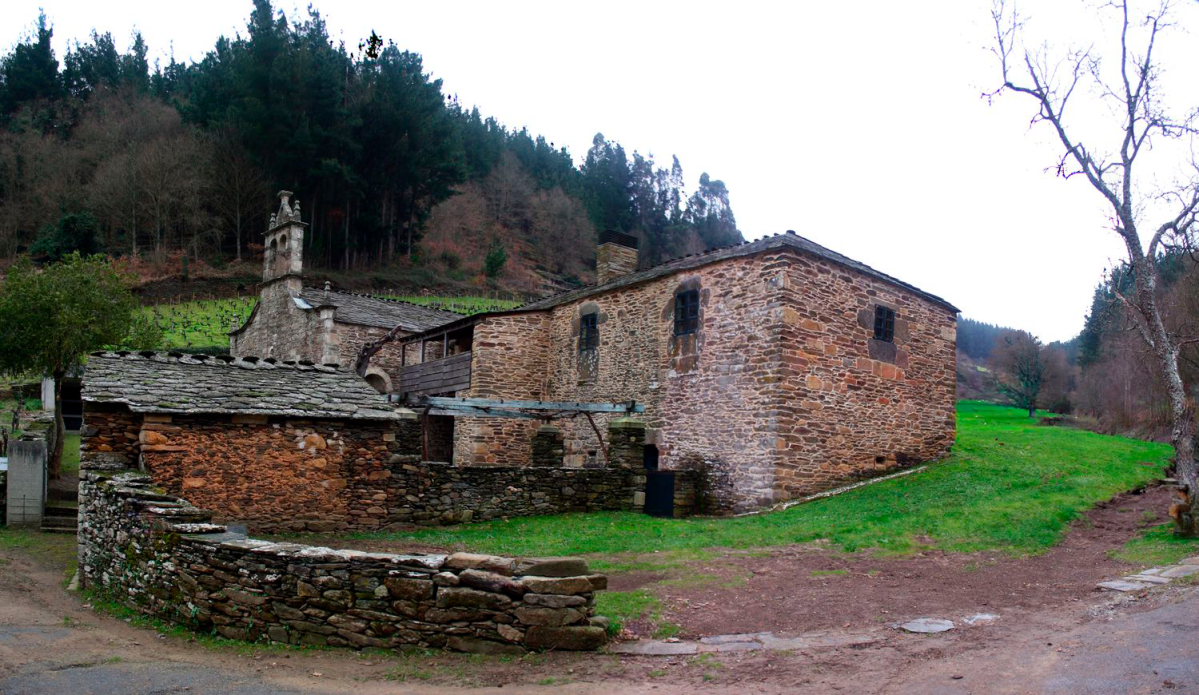San Facundo of Ribas de Miño

In 1997, it underwent restoration, which earned the prestigious award from the College of Architects of Galicia, recognizing it as the best project completed in the region. Beyond its impressive architecture, the surroundings are breathtaking, with vineyards cascading down the slopes of Monte de la Trapa to the Miño River. Another major draw is its pier for catamarans.
It is said that the vault of San Facundo de Ribas de Miño is the earliest example of Gothic architecture on the Iberian Peninsula. It consists of six robust stone arches converging at a keystone placed just 5.30 meters high.
San Facundo was founded around the year 1120 with the purpose of welcoming pilgrims traveling to Santiago. Its history begins slightly earlier when Queen Doña Urraca, in a fit of anger, decided to cut off the revenue stream the pilgrims provided to Archbishop Xelmírez and destroyed the bridge at Portomarín over the Miño River, which was part of the French Route to Compostela. In response, Benedictine monks settled where the Miño River calmed, using boats to ferry pilgrims across and founding the monastery. Around this time, Pedro the pilgrim rebuilt the Portomarín bridge, making San Facundo a refuge for travelers who couldn’t afford the toll and spent the night in the church.
In this monastery, pilgrims were welcomed, listened to, and cared for as if they were part of a large family. Today, this historic “Jacobean house” is a national monument.
Santa María de Castro de Rei (Mosteiro Vello)
Only a few parts of the ancient church remain, such as the apse on the right side, part of the walls, and other fragments. Inside, there are traces of frescoes dating from the 15th and early 16th centuries, as well as a fascinating pre-Romanesque capital. The church of Santa María de Castro de Rei holds a valuable silver parish cross, about one meter long, created in 1730.
The site’s name, Mosteiro Vello (*Old Monastery*), refers to its original monastic location. There was once a Benedictine monastery here, dating back to the 12th century, before it was relocated near the Loio River and established as an independent abbey belonging to the Bernardine Order.
The monastery’s land was donated to the Cistercians by Emperor Alfonso. Ten abbots ruled over the monastery and its surrounding area. After the last abbot’s death, it became a priory under the authority of Montederramo Abbey in Ourense. It was Alfonso VII who granted this place to the Cistercian Order. Later, Alfonso IX made several royal grants to the monastery and visited it in 1228. These grants were confirmed by Ferdinand III in 1231 and by Alfonso X in 1255.
42.774140327513, -7.6268917571444
Lugar O Lombao
27611 Lugo
Spain